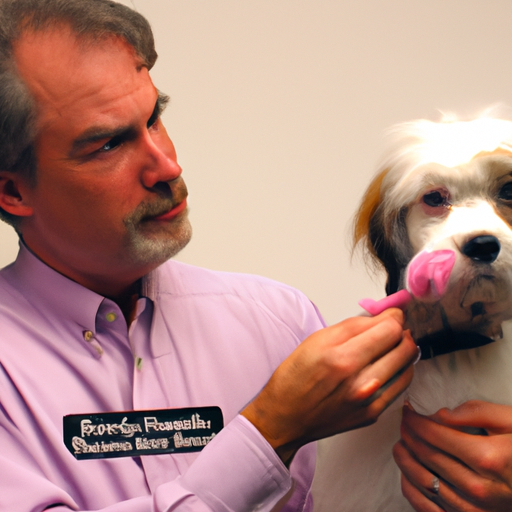As a dog owner, you’re likely familiar with the sight of your dog’s pink thing, or in more clinical terms, the penis sheath or the bulbus glandis, protruding. It can be an awkward sight, particularly if you’re not familiar with why it happens. However, it’s important to understand that this is a natural part of a dog’s anatomy and is usually not a cause for alarm. Still, in some cases, it can signify a medical condition that requires attention.
Table of Contents
- Understanding Your Dog’s Anatomy
- Why Does the Pink Thing Come Out?
- When to Be Concerned
- How to Handle the Situation
-
Frequently Asked Questions
-
Key Takeaways:
- The appearance of the ‘pink thing’ is a natural part of a dog’s anatomy
- It can be due to excitement, arousal or physical stimulation
- Prolonged exposure can lead to a condition known as paraphimosis
- Seek veterinary attention if your dog seems uncomfortable or distressed
Understanding Your Dog’s Anatomy
The ‘pink thing’ or ‘red rocket’, as it’s often colloquially referred to, is a part of your dog’s genitalia. It’s technically called the bulbus glandis and is hidden under the prepuce or foreskin most of the time. When you see it, it’s the dog’s penis coming out of its sheath.
Why Does the Pink Thing Come Out?
In most cases, the pink thing comes out due to natural physiological reasons such as arousal or excitement. Even non-sexual excitement, like during play or upon meeting new people, can cause this. A dog might also lick or clean itself, resulting in physical stimulation that causes the pink thing to come out.
Owners should understand that this is a normal part of a dog’s life. However, if the pink thing remains out for prolonged periods or the dog appears to be in distress, it could be a sign of a condition known as paraphimosis.
You might find this guide on understanding dog behavior useful in distinguishing between normal and abnormal behaviors.
When to Be Concerned
While the appearance of the pink thing is typically harmless, there can be instances when it’s a cause for concern. This includes situations where the dog’s penis remains exposed for a long time, leading to a risk of drying out or suffering from injuries.
Prolonged exposure can lead to a condition known as paraphimosis, which is the inability of the dog to retract its penis back into the sheath. If you notice this, it’s crucial to seek veterinary attention immediately.
Another condition, called phimosis, is when the dog cannot extend its penis from the sheath. This too requires veterinary attention.
How to Handle the Situation
When the pink thing comes out, it’s best to let it retract on its own. Attempting to manually retract it can cause injury to your dog. If the penis remains out for an extended period or your dog seems uncomfortable, a warm bath or a gentle wash with warm water can help. If this doesn’t work, it’s time to consult your vet.
You might find this article on dog health helpful in understanding what’s normal and what’s not when it comes to your pet’s health.
Frequently Asked Questions
-
Is it normal for my dog’s pink thing to come out?
Yes, it’s a natural physiological response and can occur due to excitement or physical stimulation. -
How long does it take for the pink thing to retract?
It usually retracts on its own within a few minutes. If it doesn’t, and your dog seems distressed, contact your vet. -
Can I help my dog retract its pink thing?
It’s best not to try this yourself as it can cause injury to your dog. A warm bath or a gentle clean with warm water may help. -
What is paraphimosis and phimosis?
Paraphimosis is a condition where the dog cannot retract its penis back into the sheath. Phimosis, on the other hand, is when the dog cannot extend its penis from the sheath.
For more detailed information about your dog’s health and well-being, you might want to check out this comprehensive guide on dog care.
In conclusion, the appearance of your dog’s ‘pink thing’ is usually a natural occurrence and not typically a cause for concern. However, prolonged exposure or noticeable distress in your dog should prompt a visit to the vet. Remember, understanding your pet’s anatomy and behavior is key to ensuring their health and happiness.



